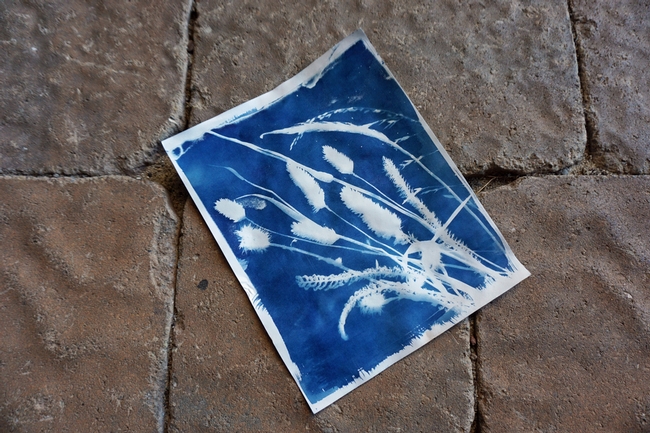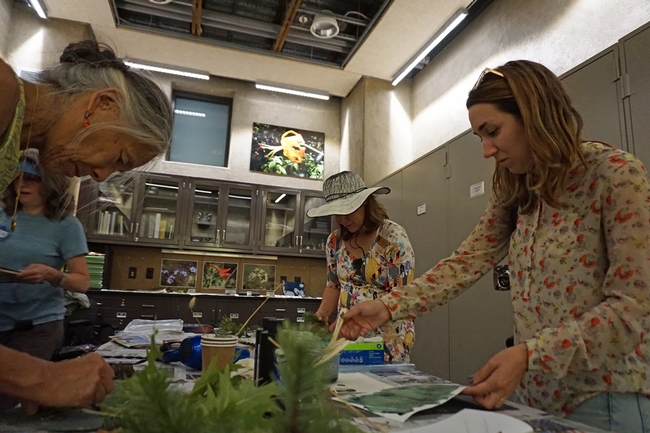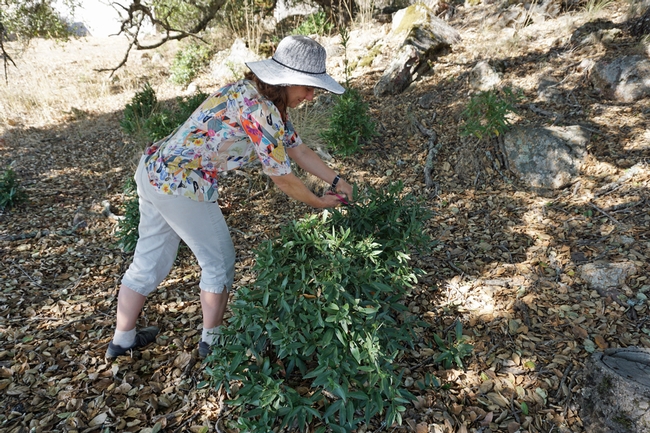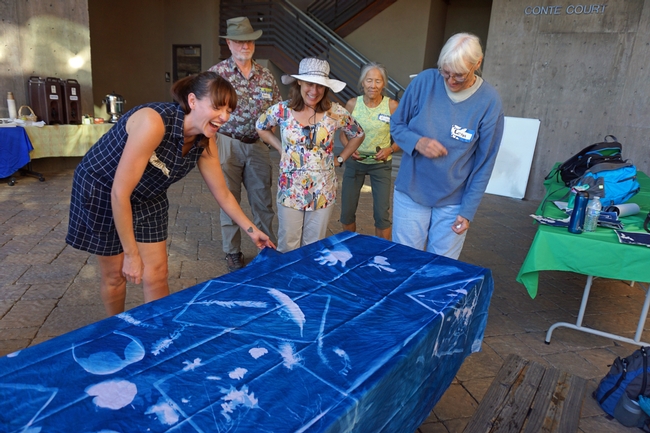Art is an expression of creativity, a conveyance of beauty, and for naturalists, it is a way to process, remember and interpret nature.
Many branches of nature art are popular, such as photography, painting and sketching. The UC California Naturalist Regional Rendezvous in October introduced an old but uncommon method for documenting natural objects – cyanotype.
At the CalNat Rendezvous at the Pepperwood Preserve, Santa Rosa artist Jessica Layton taught the cyanotype process to volunteers certified by the UC California Naturalist program, giving them a new tool to use in educating and engaging children and adults in conservation organizations they work with around the state.
The cyanotype process begins by mixing two chemicals - ferric ammonium citrate and potassium ferricyanide – to create the blue photo reactive solution. The chemicals may be purchased at art stores and online by searching for cyanotype solutions.
Once blended, the chemicals are painted on paper or cotton cloth and allowed to dry. Leaves, grasses, seeds, pine cones, flowers, stones – any number of natural objects collected outside may be artfully arranged on the blue background and, if needed, held in place with a pane of glass.
The project is then set out in bright sunlight for 5 to 7 minutes, brought back inside to be washed in clean water and allowed to dry. The areas of the paper or cloth exposed to the sun are a radiant lapis blue; the areas that were shaded by the natural objects appear in silhouette.
“I have come to appreciate art as a way to improve observation skills and deepen an appreciation for nature,” Merenlender said. “We offered this session to our volunteers for them to improve their capacity and become better naturalists.”



